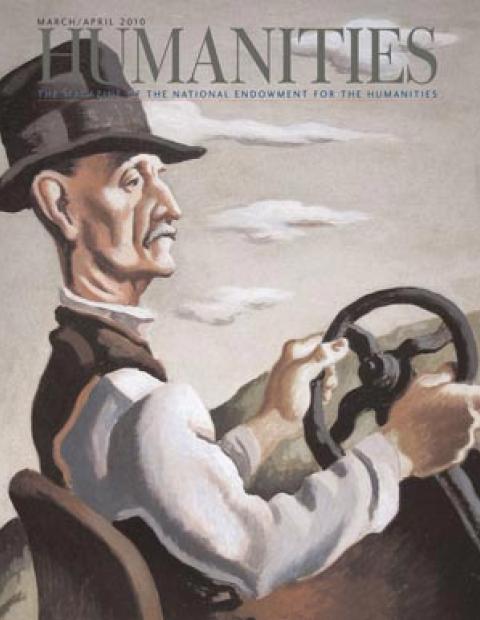Between June 14 and July 27, 1794, hundreds of nobles, shopkeepers, clergy, corset makers, vintners, and other “suspicious” citizens were executed by guillotine at Place de la Nation in Paris. It was the height of the French Revolution—Robespierre’s Reign of Terror. Death came quickly, as fast as seventy-one beheadings in an hour. After each day’s destruction, victims were hauled in sealed wagons to the yard of a nearby convent, where their clothes were removed to pay the gravediggers and their bodies were stacked neatly in two mass graves. After the Revolution, eleven families of noble victims together purchased the graves and surrounding land, six and a quarter acres, and established Picpus Cemetery, the largest private cemetery in Paris.
The dead numbered 1,306 souls. “If Robespierre hadn’t been executed, it would have been six thousand,” declares the cemetery’s modern-day caretaker in the NEH-funded documentary Picpus: Walled Garden of Memory, the centerpiece of a digital archive produced by Northwestern University about the cemetery and the neighboring Rothschild Hospital.
The names of nobles and others of standing buried in the mass graves—including Robespierre himself, interred with those he had condemned—are chiseled onto the wall of a small 1840 chapel near the cemetery. Sixty percent of those killed were ordinary citizens; their names and professions not listed alphabetically, but by date of execution. Near the end, July 17, are the sixteen Carmelite nuns whose martyrdom inspired poetry, a play, and an opera. Listed under July 5 is Baudus, H. J., a judge from southern France, killed for supporting priests who remained loyal to the Catholic Church in Rome. He had been transported with three of his fellow citizens from Cahors: a bailiff, a priest, and a tanner, the first two dying with him on the scaffold. In the film his descendant, Florence de Baudus, recalls being told as a young girl that her ancestor was buried in the “Garden of the Tortured Victims.” “I imagined,” she confesses, “a vegetable garden, full of lettuce.” It wasn’t that kind of garden, of course, as she realized when her father took her to visit.
A more famous name appears on June 27: de Noailles Mouchy, Phil.—the Duke of Mouchy and great-uncle to Adrienne de Noailles, wife of the Marquis de Lafayette. Adrienne de Noailles lost eight relatives to the guillotine, all in one month, including her mother and sister. In 1803, Adrienne and ten others founded the cemetery and took management of the memorial. She insisted on being buried near her family, which meant that her husband, too, would have his tomb at Picpus. It is here that the French Revolution and the American Revolution meet—at the burial site of Lafayette, who, as a young French noble, sneaked away from his commission with the French army to join the American cause. When he died, Lafayette’s tomb was sprinkled with soil he had brought back from Bunker Hill after his 1824 hero’s tour. Shortly after his burial, an American flag was erected at his tomb and has flown ever since. It is one of the few places in the world (including on American soil) that the American flag flies officially day and night. A French/American ceremony is held there every Fourth of July.
A descendant of Lafayette’s recounts in the documentary how when General Pershing arrived in Paris in 1917 to lead the American forces in World War I, he made a pilgrimage to Lafayette’s grave. The announcement made that day at the grave (“Lafayette, we are here!”) has become the stuff of legend.
The flag at Lafayette’s tomb in Picpus continued to fly even during the German occupation of Paris in World War II. The convent and cemetery were considered sacred and off-limits to German soldiers. Yet, on the other side of the cemetery’s wall was the Rothschild Hospital, which was used during the occupation as a place to hold Jews before they were deported to concentration camps. Some escaped through the morgue or with the help of the nuns of the neighboring convent, but as the records on the digital archive show, most names of the Rothschild residents are followed by the ominous word “Drancy”—the first stop on the transport to Auschwitz-Birkenau.

